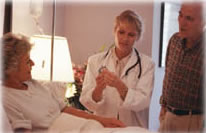


   |
Mastocytosis - Causes, Symptoms and Treatment
Definition Mastocytosis is a disorder characterized by mast cell proliferation and accumulation within various organs, most commonly the skin. It is a disorder in both children and adults. It is caused by the presence of too many mast cells in your body. You can find mast cells in skin, linings of the stomach and intestine, and connective tissue. There are three main forms of mastocytosis. In a rare form, mast cells accumulate as a single mass in the skin. Typically, a mastocytoma develops before age 6 months. In a form called urticaria pigmentosa, mast cells accumulate in many areas of the skin, forming small reddish brown spots or bumps. When an UP or M lesion is stroked, it typically urticates, becoming pruritic, edematous, and erythematous. This change is referred to as the Darier sign, which is explainable on the basis of mast cell degranulation induced by physical stimulation. Causes
Symptoms
Treatment
| |
Online Doctor || Teeth Care || Contact Us || Diabetes Care || Cellulite Guide || Chemotherapy || Acne Products ||
|
|
(c) Online-family-doctor.com All rights reserved
Disclaimer: Online-family-doctor.com is an information and educational purposes web site only. It is not intended to treat, diagnose, cure, or prevent any disease. Do not rely upon any of the information provided on this site for medical diagnosis or treatment. Please consult your primary health care provider about any personal health concerns. We will not be liable for any complications, or other medical accidents arising from the use of any information on this site.